The hoopoe (Upupa epops) is one of the most popular birds in the Mediterranean region of Spain, known for its distinctive call, striking crest, and unique odor. Remarkably, Spain hosts the largest breeding population in Europe, with approximately 500,000 breeding pairs. This article explores the hoopoe’s features, habitat, diet, and reproductive behavior.
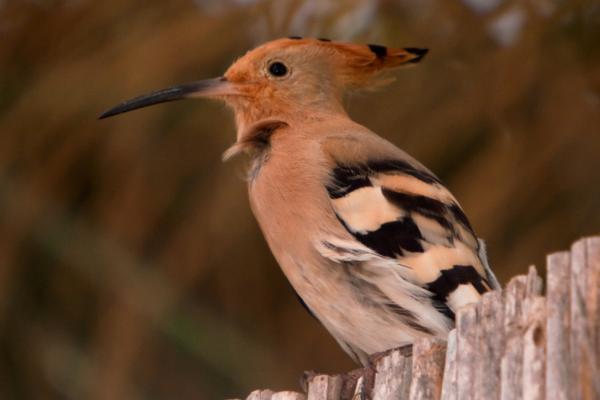
The hoopoe’s most notable feature is its crest of feathers, which are brown with black tips. Usually folded, the crest fans out during rest, courtship, or when threatened, making the bird appear larger.
Body coloration is light brown with hints of orange and pink; wings and back show black bands matching the crest
Sexual dimorphism is minimal; females have slightly duller colors
Length measures about 27 cm with a wingspan of 44-48 cm
Long, slender, downward-curved dark bill
Flight is irregular and undulating, resembling a butterfly’s movements with sudden changes in direction
Wings display white feathers when spread, creating a spectacular sight in flight
Uses sand baths to clean feathers and remove parasites, substituting for water baths
Call sounds like a repeated “pu-pu-pu-pu,” long and harsh; audible both day and night during spring, sometimes accompanied by harsh cackling
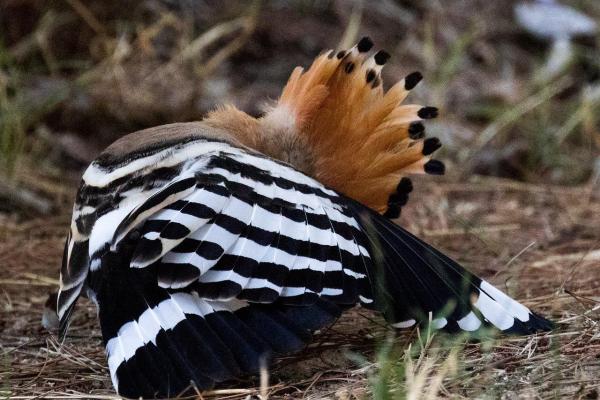
Hoopoes prefer dry environments such as steppes, semi-deserts, open oak, cork oak or deciduous forests, grasslands, and occasionally cultivated orchards. They avoid northern latitudes, mountainous, and humid areas.
As trans-Saharan migratory birds, they winter in eastern Africa. Most populations reside year-round in warm Spanish regions including:
Balearic Islands
Canary Islands
They are also found along the Pacific coast of China, northern Turkey, and India.
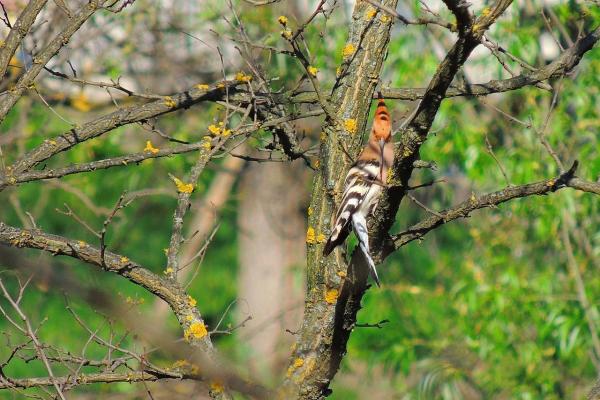
Equipped with a long bill, hoopoes expertly extract larvae and insects from soil, turning stones and leaves to locate prey. Common food items include:
Grasshoppers
Crickets
Millipedes
Spiders
Earthworms
Caterpillars
Pupae
Hoopoes catch prey by pecking, tossing it in the air, and catching it skillfully. They do not require drinking water, deriving necessary moisture from their diet, an adaptation to semi-desert habitats.
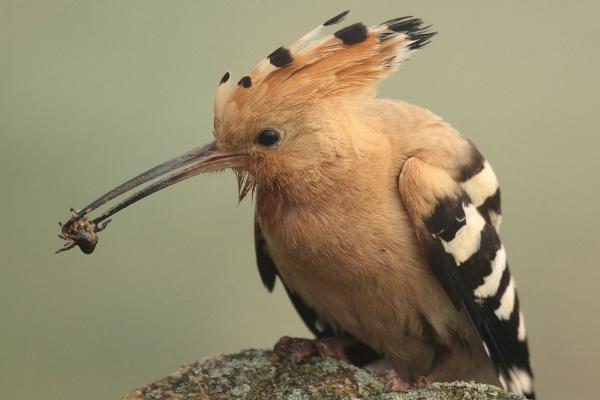
Hoopoes are oviparous with internal fertilization. Migration correlates with post-nuptial (August to October) and pre-nuptial (March to May) periods.
Breeding starts in May, involving courtship displays where males sing and fan their crests to attract females. Nest sites are close to the ground in tree cracks, rotten wood, stone piles, or wall crevices, cleaned and arranged by the parents. Nests are changed annually and lined with a few leaves.
Nests are not cleaned of droppings to deter predators via odor. Hoopoes are infamous for their unpleasant smell, which also serves as protection.
Females lay 5 to 10 eggs, primarily incubated by the female for 15-20 days. Chicks hatch nearly blind and featherless in late August, remaining in the nest about 20 days before fledging. Both parents feed and teach survival skills. The secretion of foul liquids by juveniles and females deters predators. The average lifespan is around five years.
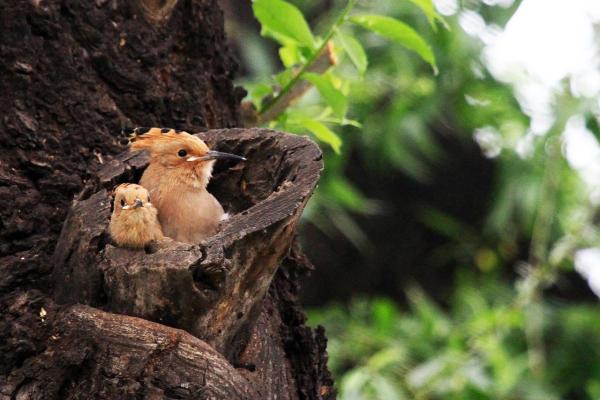
With its unique appearance and ecological role, the hoopoe is a fascinating and important bird of the Mediterranean. Understanding its habits and habitat is key to its conservation.
For more wildlife insights, visit our [Wild Animals] section.
Bibliography
Spanish Society of Ornithology. (s.f.) Grandmother. Available at: https://seo.org/bird/bubble/
Iberian Fauna (s.f.) Bubble Upupa epops. Available at: https://www.iberica.org/bubble
Walnuts, E. (2007). Baza Sierra Project: Abubilla. Available at: https://sierradebaza.org/technical-figures/wildlife-figures/bird-figures/birds-a-b/abubilla-upupa-epops
animal tags: Hoopoe
We created this article in conjunction with AI technology, then made sure it was fact-checked and edited by a Animals Top editor.